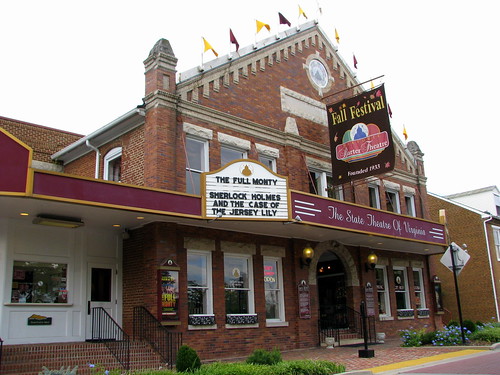With its rich cultural and artistic heritage, many Appalachian towns are looking at promoting the arts as an economic driver. Some places – like Abingdon, VA  with its Barter Theater – have seen success with this model, but others have struggled. The Lexington Herald-Leader recently profiled the town of Hindman, KY and its “arts and smarts plan” promoted by then-governor Paul Patton:
with its Barter Theater – have seen success with this model, but others have struggled. The Lexington Herald-Leader recently profiled the town of Hindman, KY and its “arts and smarts plan” promoted by then-governor Paul Patton:
The CDI [Community Development Initiative] built two institutions in Hindman: a Kentucky School of Craft, to train folk artists, and an Appalachian Artisan Center, to exhibit and sell their wares. Patton said he wanted to expand the local economy beyond coal mining’s boom-and-bust cycle.
“We hoped to establish a little artistic community much like Berea has. As an economic development tool, we anticipated people coming in for art shows, to attend classes, to shop,” Patton said in a recent interview.
Unfortunately, things did not go quite as planned. Politics, insufficient funding, corruption, and the challenge of attracting and keeping quality artisans and teachers have plagued the School of Craft in particular. These challenges underscore the need for long-term, stable investments and solid political leadership, but also the importance of developing an area’s own artisans and teachers. Accrording to the article, the School of Craft essentially had to close when its two teachers – both from outside the region – left because they didn’t “want to live in Hindman anymore.”
But in a region as artistically rich as Central Appalachia, why are we relying solely on teachers from outside the region? One of the reasons, according to a recent commentary in the Daily Yonder, is that we’re “exporting” our artistic young people:
Like clear-cutting a forest or blasting the top off of a mountain in order to send wood and coal to urban dwellers, the American arts system extracts artistic resources in the form of talented young people and tells them that the only place they can make a living in the arts is New York City. …shouldn’t we be teaching our talented young people the skills needed to practice their art in places other than New York and Los Angeles, in places that are starving for the arts, maybe even places like their own home towns?
…How would interest in the arts improve across the country, and even in the legislature, if performers put down roots in a place they loved, built a life there and created art that reflected the stories, the songs, the dances, the colors, the shapes of their chosen town? What if the arts world was more like a local farmer’s market, filled with products that grew organically from the dirt, rain and sun of a particular place? What if, like local farmers, local artists found a way to make a living within the context of their specific place, rather than within some generic model created for somewhere else that wastes 58% of what it grows? And why can’t those places include rural areas, where people are just as interested in being entertained and enriched?
The commentary cites a number of examples of places where this is happening, including Whitesburg, KY (with a shout-out to Appalshop!). Hazard, KY should soon be getting a downtown arts center as well, thanks to the Appalachian Arts Alliance, a newly-formed non-profit backed by the Foundation for Appalachian Kentucky. It will be a place for music and dance lessons and community theater, according to the article in the Hazard Herald. There are places like this across the region – big spaces that attract visitors from all over for major concerts, and small spaces for families to watch their kids’ school concerts. Creating thriving arts spaces in Appalachia isn’t just about bringing in tourism dollars from outside the region. It’s about creating thriving communities that keep us engaged and make us proud of where we live.





